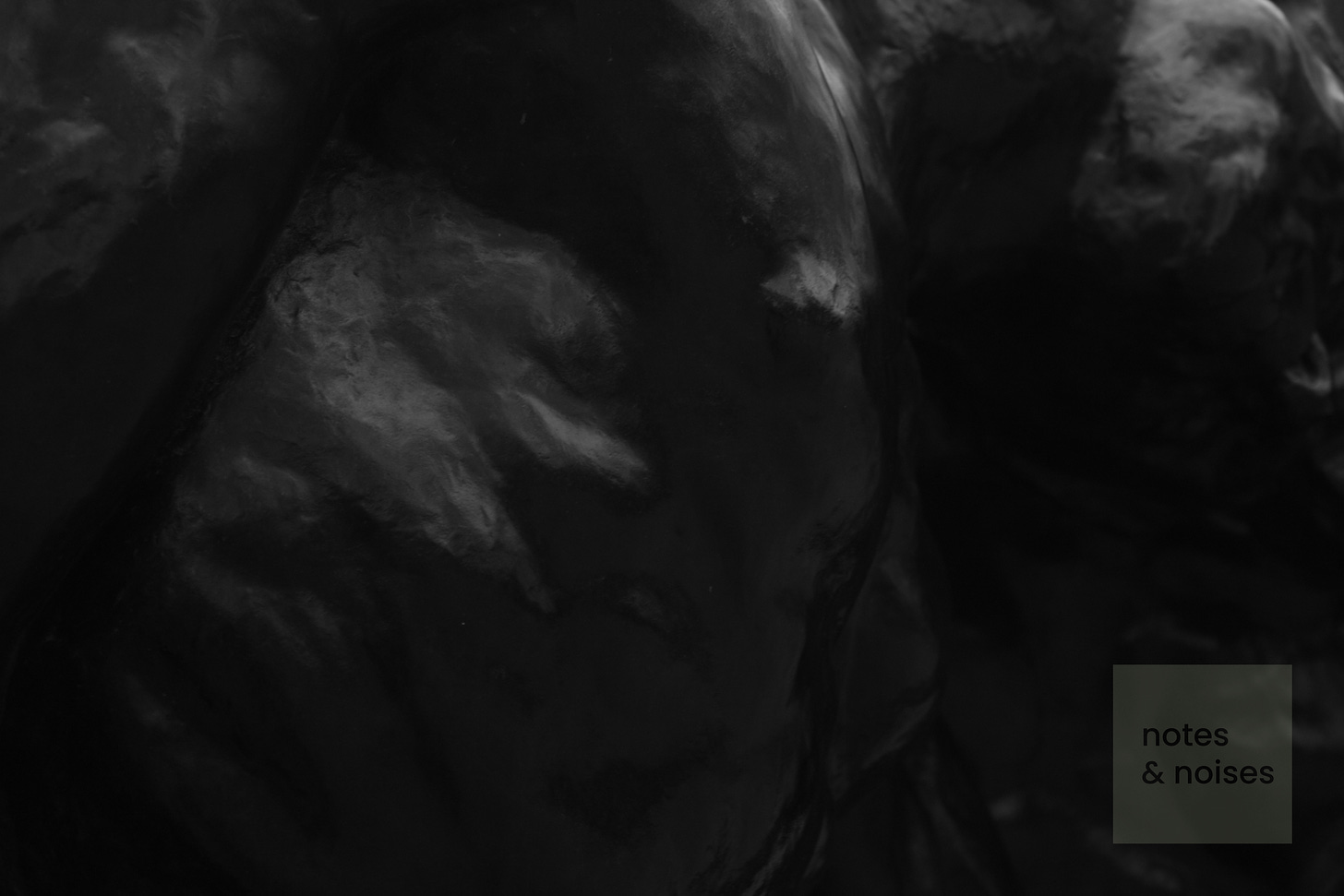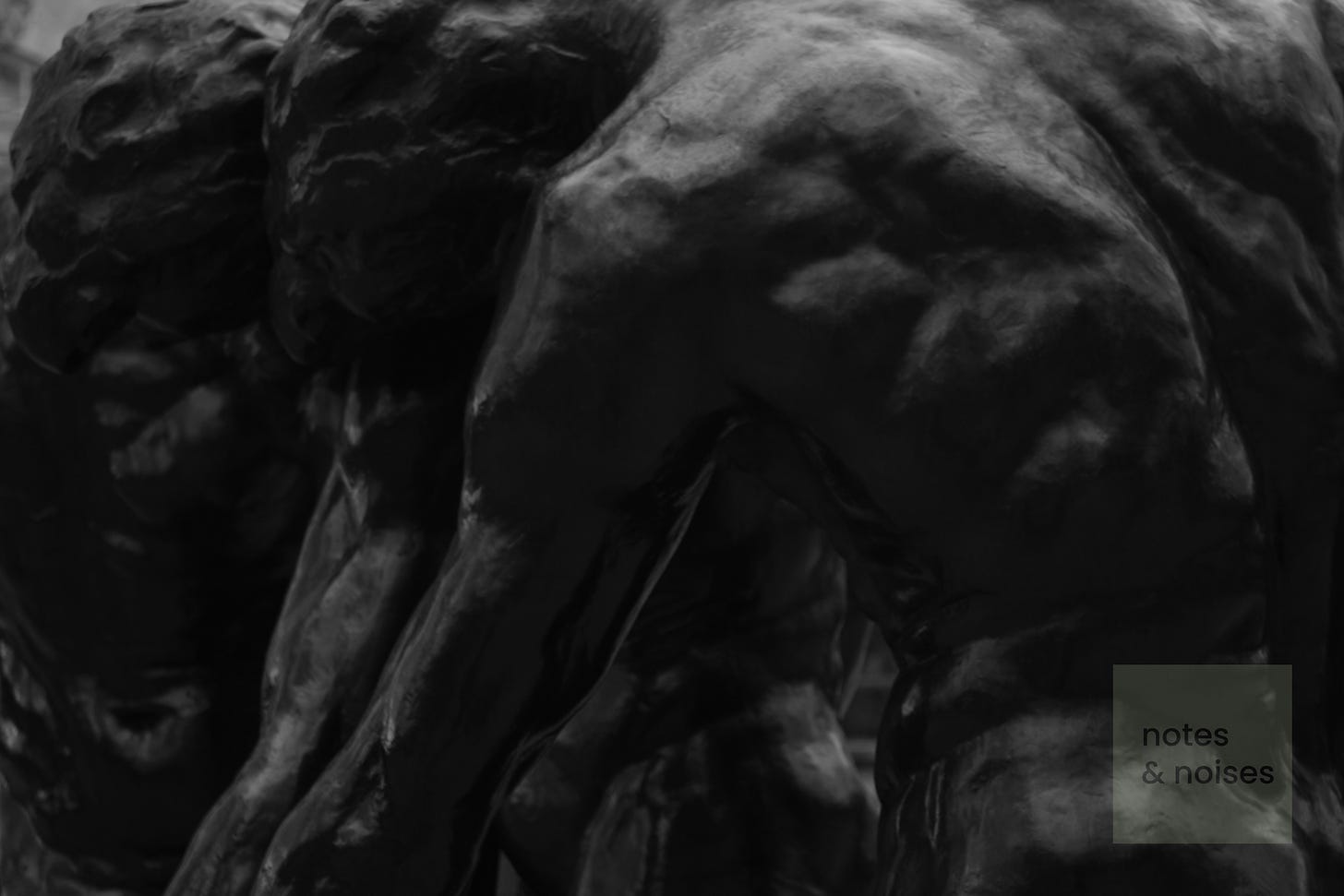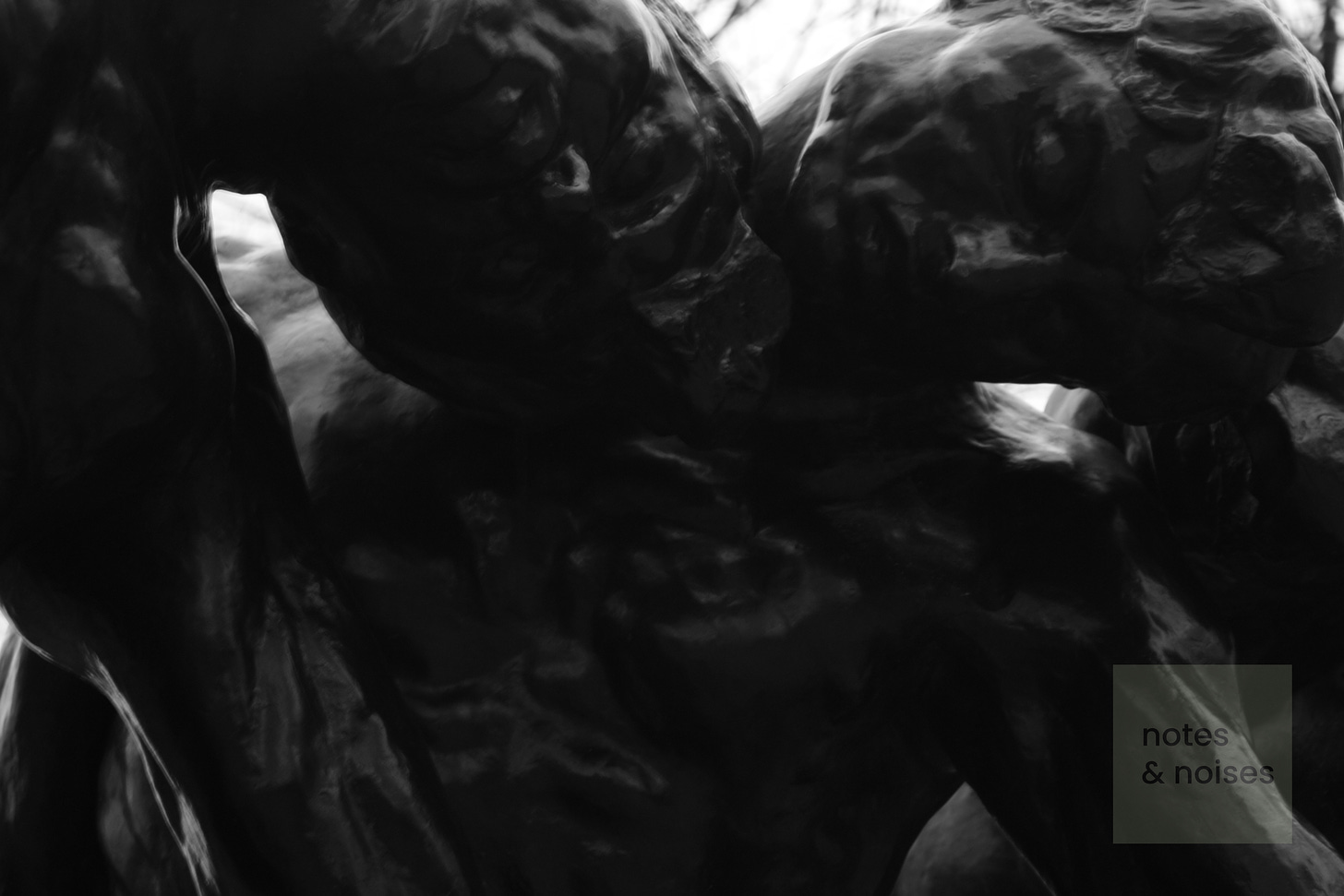The Burghers of Calais (1889) by Auguste Rodin tells the story of the moment when six of Calais’ leaders stepped forward in a heroic sacrifice to spare the lives of their people, after the city fell to the English during the Hundred Years War.
You could say it tells six stories, one for each figure, sculpted with varying expressions of despair, bravery or resignation on their faces. It’s a masterpiece of composition and expression of the human form, and it drips with narrative as you move about its plinth, positioned just outside the main house in the gardens of the Musée Rodin in Paris. I could have spent all day snapping photos of these figures from different angles, each conveying a alternative meaning; Are they afraid or angry? Is it bravery or regret?
Then again, you could say it tells many thousands of stories… by arranging these figures in a tight group about which you could walk and look through, Rodin had actually created an opportunity for a wide variety of complex narratives and interactions. It really depends on how you look at it rather than simply what it is - Rodin wasn’t only telling the story itself, he was recreating the experience of the moment and every interpretation a viewer could have had of that moment at the time - a concept that very much exemplifies how Rodin dragged sculpture into the modern era at the end of the 19th century.
But that is not what this is about…
It turns out I was looking at something else entirely that day. I was relatively new to photography with a DSLR and all the manual controls and settings that came with it. I was finding my way and exploring how the light on these figures and their faces could be captured. At some point I switched to black and white, adjusted the exposure settings and just like magic it was as though the camera had started to create something entirely new. I had suddenly stopped documenting and had begun capturing textures and light effects. I found the otherwise green-blue surfaces of these bronze figures had begun to shimmer and bleed in the dull December light. What had started as a sculpture now became a material in itself with which I could start to paint and draw.
Capturing the shadows
The fading light only served to increased the drama in these images. I remember being terrified to touch anything other than the shutter release lest I ruin what I had somehow stumbled upon.
I moved over to Les Trois Ombres (1886), another bronze by the artist that was placed nearby beneath a grove of tall trees. This work, of three figures stooped over, shoulder to shoulder, pointing down from their position atop the gates of hell, provided and incredibly deep contrast and maleable texture to work with. I came away with images that could have been entirely abstract if taken out of context. Images that reduced the hard bronze skin of these figures down to something almost luxurious and silken. A pure blend of dark and light, shadow and highlight.
I had no idea what I was doing, or how I was doing it… and the images themselves are arguably blurred and under exposed… but at the time I was delighted I had found whatever it was and that I had allowed myself to try out something new.
Mixing it up
At this time I had started to become more and more interested in capturing the effect of movement, blending light and long exposures. I was fascinated with capturing in a single image, expressions of time passing or of movement through space. I knew this was nothing new in the wider photographic sense, I wasn’t breaking new ground here, but I was definitely on a journey of discovery with this camera and also with what I could do afterwards with the images on my laptop.
I started to grab images and cut outs and push them together. Digital images allow for almost infinite copies and I did not hold back. It was mindless to a degree - I just wanted to see what it would look like if I was to put these things together… but with Rodin’s figures, and particularly the hands, it was an attempt to animate and move them in space. Such was the intensity of these hands that they provided a great expressive shape and gesture to work with and a fantastic starting point.
I ended up printing some of these and giving them to friends once I returned home the next year. I never really created collages with specific objects or hands like this again, I think I felt the resulting shapes and forms to be a bit harsh, but the process of creating more dynamic photographic collages had begun at this point. During my time in Paris and from that point on I began to explore collages with multiple images of the same scene super imposed on each other, I would also explore how colour and light could be blended to create more abstract and instense images.
But that can be for another day.
Video/Music: I Don’t Mind - Along
I’ll leave you with this video I made shortly after this point in which I used images of my own hand in various poses as a sort of “hand dance” to accompany a piece of music I had made called “I Don’t Mind - Along”.
I was almost certainly inspired by Rodin’s hands when making this. I was likely also just looking for a subject to experiment in creating videos with using lots of single images in each frame. Holding my hand out in front of the camera with some strong lighting gave me something clean and expressive to work with and a nice dark background. Unfortunately my soft, moisturised middle class skin was not quite as expressive as those on The Burghers of Calais but I had to make do with what I got!
















In the early part of the 20th Century, German lyric poet Rainer Maria Rilke spent time as Rodin’s secretary and the experience deeply influenced Rilke’s 1907 volume, New Poems. Rodin taught Rilke the value of objective observation, of actually “seeing” a thing.
What a lovely post, David. I love your unique eye for artistry and how you find beauty in so many ways that many of us -myself included- would not pause on if left to our on devices. We need more folks like you, drawing our attention to such things. The images you capture add your own ingredients to an already well crafted recipe, and it really works!
Love the hand dance and the music. Great stuff!